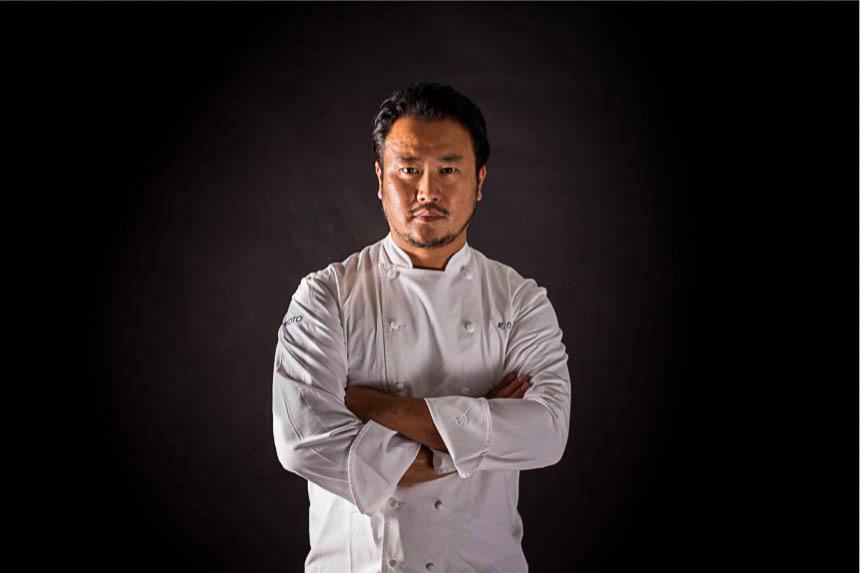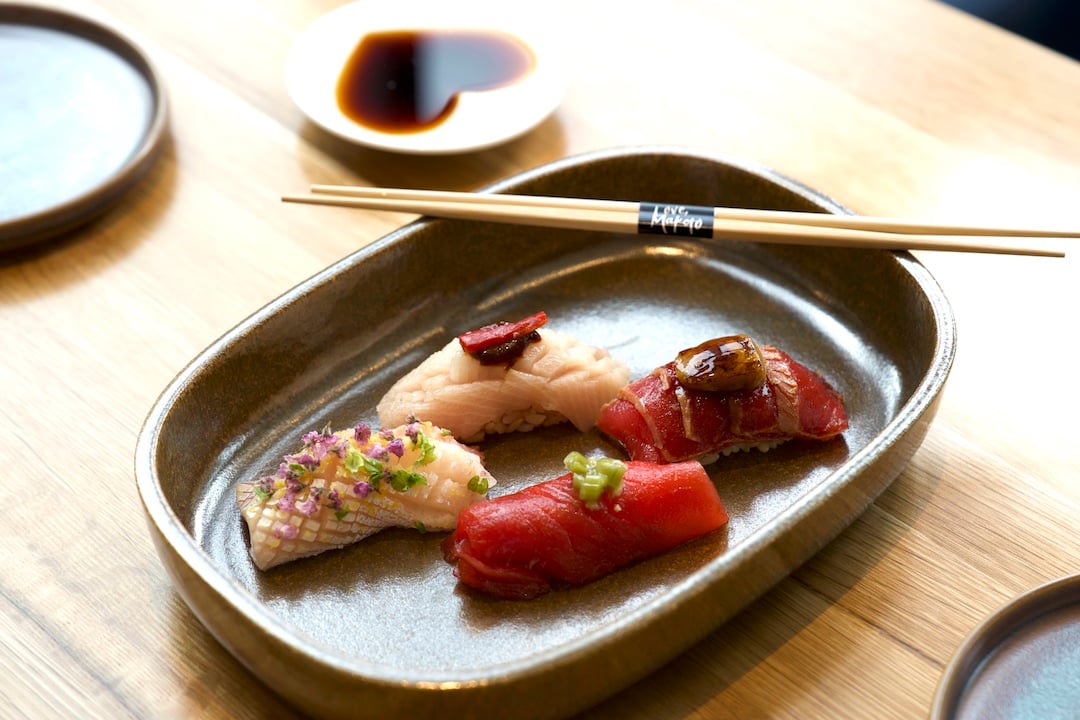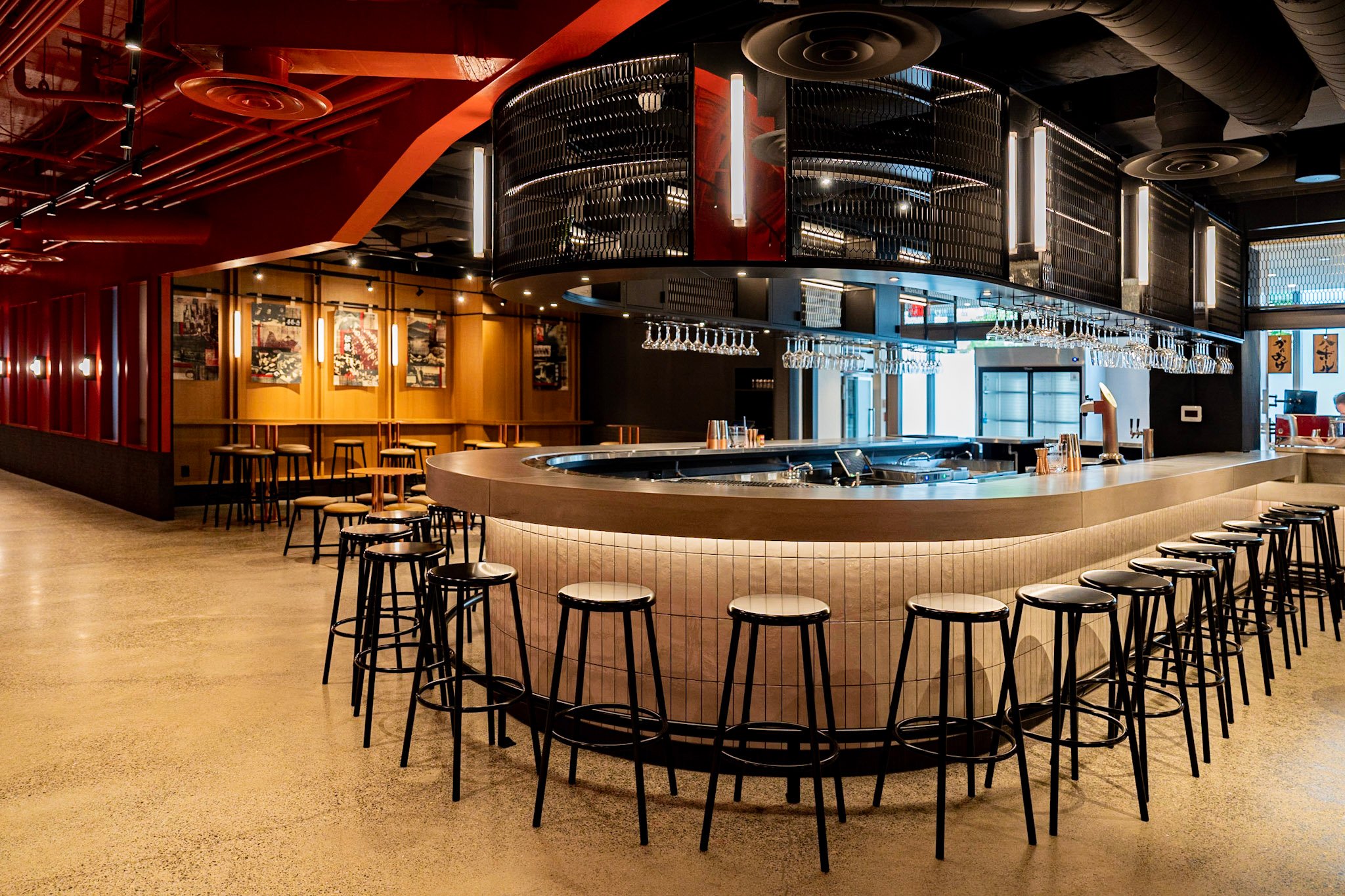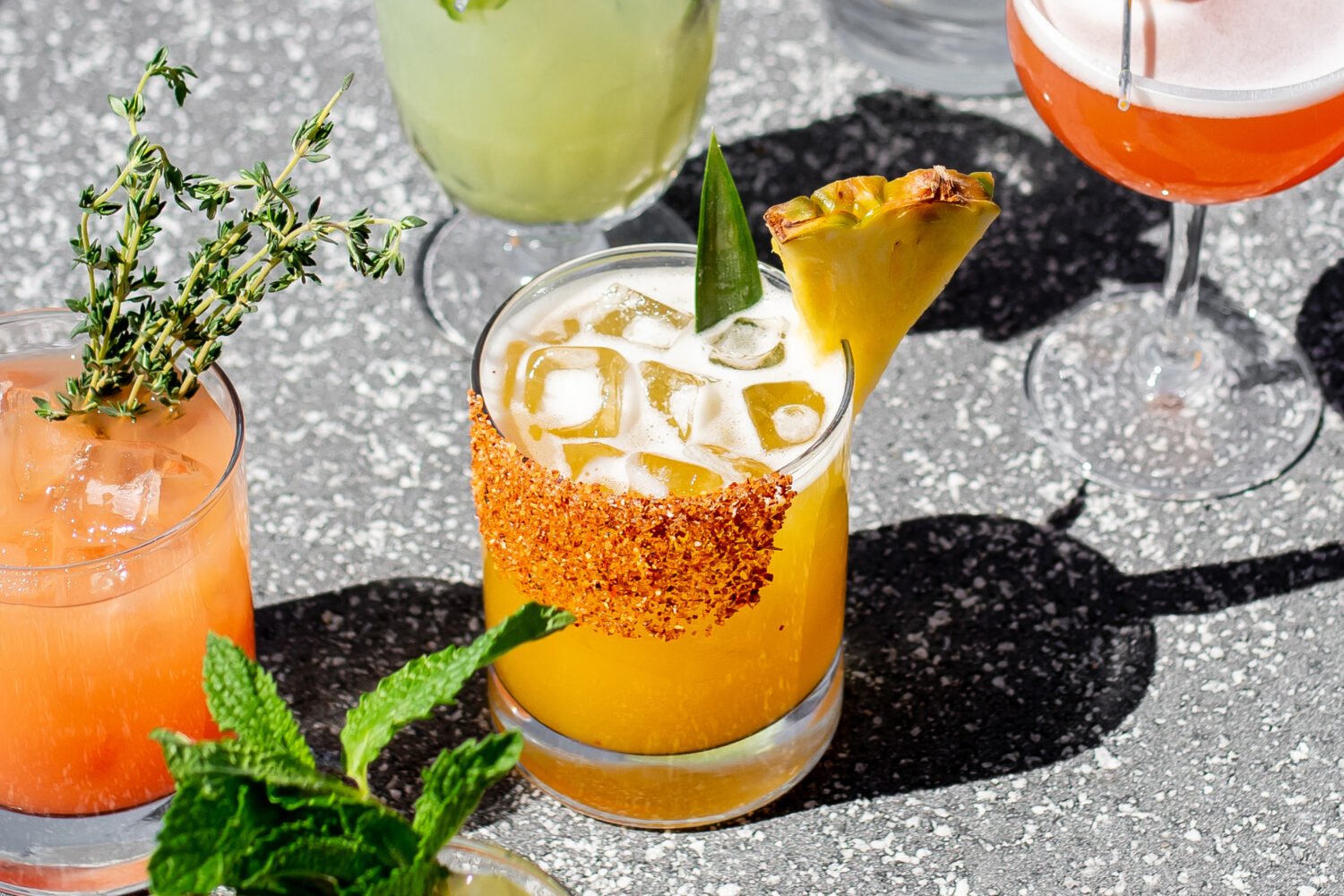About Restaurant Openings Around DC
A guide to the newest places to eat and drink.
Love, Makoto. 200 Massachusetts Ave., NW.
One of DC’s most hotly anticipated openings is finally here. High-end Japanese food hall Love, Makoto opens today in the Capital Crossing development between Chinatown and Union Station. It contains three initial restaurants: Dear Sushi featuring new- and old-school omakase; Beloved BBQ, a Japanese-style steakhouse with tabletop grills; and Hiya Izakaya, which specializes in grilled skewers and highballs. A fast-casual section of the venue is coming this summer with udon, ramen, soba, curry, dumplings, pastries, and much more.
Love, Makoto is a collaboration between chef Makoto Okuwa, whose modern Japanese restaurants span the Americas, and Eric Eden and chef David Deshaies, the owners of glam-Italian hotspot L’Ardente (next door to the food hall) and Unconventional Diner in Shaw. The venture is also a homecoming of sorts for Okuwa: He moved from his native Japan, where he began apprenticing as a sushi chef at age 15, to DC more than 20 years ago to work at Sushi Taro.

Okuwa went on to become head sushi chef at Masaharu Morimoto’s eponymous restaurants in Philadelphia and New York and appeared alongside his celebrity boss on Iron Chef. He eventually opened his own restaurants in California, and went on to partner with Le Diplomate restaurateur Stephen Starr for his namesake restaurant Makoto in Miami, which now has offshoots in Mexico City, Sao Paulo, and beyond.
The 20,000-square-foot food hall’s space was originally supposed become an outpost of Italian marketplace Eataly. When Eden had the opportunity to scoop it up, he thought of Okuwa. They’d been introduced by an ex-girlfriend of Eden’s more than a decade ago and had remained good friends. “He’s got a big heart,” Eden says. Love, Makoto is his love letter to Japan.
Here’s a full rundown of the opening concepts:
Modern Meets Traditional in Dear Sushi’s Omakase Dining Room

The menu is presented as an actual love letter to sushi—complete with red wax seal—at this omakase bar/restaurant. The $75 menu is divided into four stages, starting with a seasonal mustard-flower salad and a miso soup that uses a special kind of miso sourced near Okuwa’s hometown of Nagoya (between Tokyo and Osaka). Okuwa also imports premium nori for its the handroll course, which comes next. Unlike most seaweed sheets you’ll find in the US, this extra-crackly version is toasted to order in Japan then FedEx-ed to the restaurant.
A sushi course includes 10 pieces of nigiri with a mix of “old-school” and “new-school” preparations. For example, bluefin tuna comes marinated in soy with wasabi–and elevated with burnt negi miso and foie gras. Okuwa says his more modern creations are designed for “next-level flavor impact,” not just for the sake of experimentation or extravagance. “It’s hard for me to put a lot things on top of the sushi because my fish is so beautiful. You don’t need to put anything. But I wanted to make some reason for doing this,” he says.
If you’re still craving more seafood, you can “super-size” your meal with additional sushi (think medium-fatty tuna with Hokkaido uni and white soy) and seasonal splurges (hello, Ossetra caviar and Japanese sea urchin). The set menu concludes with a strawberry semifreddo.
Grill Your Own Beef at Beloved BBQ

This Japanese steakhouse specializes in yakiniku with selections of beef that you grill at your own table. The menu offers a choice of two sets with six cuts each: America beef ($85 per person) or Japanese beef ($150). Both come with an array of small dishes like cucumber kimchi and yuzu daikon, and you can also add on starters (crab salad with avocado and smoked roe) or splurges (we hear the $85 Hokkaido chateaubriand is a surprise show).
Okuwa says the experience will be familiar to the region’s Korean barbecue fans, but the Japanese version is less heavy on bold marinades. One of his executive chefs, Takeshi Omae, is an experienced butcher as well. The two worked together for Morimoto in Tokyo, and Omae was more recently corporate chef for a big Japanese company that runs several chains.
The dining room features 19 tables with smokeless grills—they seat two to six—plus one larger table for up to 12. While the staff is happy to provide guidance to anyone who needs it, the restaurant leaves diners to grill their own meat.
Yakitori and Highballs at Hiya Izakaya

Head down a long, red hallway nodding to the torii gates of Japanese shrines and you’ll enter Love, Makoto’s no-reservation izakaya. The specialty here is robatayaki, or grilled skewers cooked over Japanese binchotan charcoal. Ten initial offerings range from chicken thighs to squid with green-shiso salsa, and there are a few vegetable options such as king trumpet mushroom with black garlic ponzu. (Look for more odd bits as daily specials.) You’ll also find snacks like wasabi guacamole, kaarage fried chicken, and “perfect potato”—mashed potato reconstructed into baton-shaped fries and served with curry aioli.
Micah Wilder, co-owner of bar-centric restaurants like Zeppelin and Chaplin’s, is behind the drink menu. He’s concocted five variations of the highball using ingredients like strawberry/shiso juice, yuzu kosho, and green-tea liqueur. A lineup of stronger drinks includes a smoky Japanese whiskey Manhattan incorporating shiitake mushrooms. Japanese beers, sake, and a handful of wines by the glass round out the list.
The walls are subtly decorated with Japanese-style screen prints that incorporate mementos from Okuwa’s life story, including a postcard from his grandfather and his first airplane ticket to the US. Beyond the bar stools, you’ll also find a mix of high-tops and very low tables, like those you might see at casual izakayas in Japan.
Noodles, Curry, Sushi Rolls, Pastries, and More Coming Soon

The fast-casual section of the food hall is still in the works. Here you’ll find a bit of everything: soba, udon, ramen, gyoza, curry, salads, sushi rolls, milkbread sandos, pastries, coffee, and soft-serve ice cream. Each menu section will have about five options, with a combination of traditional preparations plus Okuwa’s own twists. Rather than hopping between individual stalls, ordering will be streamlined through touch-screen kiosks—or your phone—with a pick-up counter. “It’s like a food hall without all the anxiety,” Eden says.
A cafe and bakery will open in the morning with Japanese pastries such as mochi doughnuts, plus boba tea, matcha drinks, and coffee. Behind the sweets is Manabu Inoue, a Tokyo native who trained in Paris and was previously executive pastry chef for Morimoto. More recently, he’s been overseeing the desserts at L’Ardente, where he created the showy tiramisu flambé you’ve probably seen on Instagram.
The space will open for lunch around 11 AM. All the noodles will be made in-house, and the kitchen is equipped with a water-softening filter that Okuwa says helps make a better product (plus better sushi rice). The menus are still in the works, but you might find buttered mentaiko udon or soba with bottarga. Ramen will feature a relatively light pork broth with an option of roasted meats.
Curry tends to be underrated in the US, even though it’s a comfort staple of Japan. Okuwa’s darker version takes some inspiration from Mexican mole with house-roasted spices. The curry will come with options like extra-crispy pork or chicken katsu, which will also be used for Japanese-style sandwiches on pillowy housemade milkbread.
Japan is full of specialists devoted to mastering specific types of foods, and Okuwa has embraced that approach throughout the food hall by bringing in top talent he’s encountered throughout his career to oversee certain specialties.
“I’m putting my life into this,” Okuwa says. “I’m bringing in the best possible people that I can possibly get to this project. That’s for sure… I don’t want to go half way in.”
Correction: The sushi course at Dear Sushi comes with both “old-school” and “new-school” nigiri, not one or the other.














